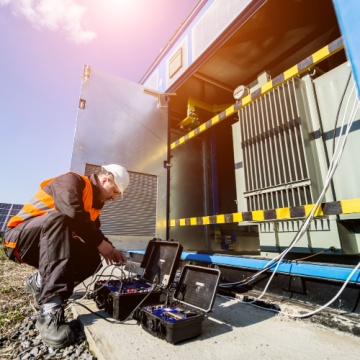From industrial facilities to power substations, transformers are considered to be indispensable components that require careful handling throughout their life cycle. Shipping of a transformer involves transporting them from one location to another for different purposes. Due to their enormous size and delicate nature, this process demands specialised equipment as well as knowledge.
Transportation of transformers is a serious affair because they tend to malfunction when subjected to excessive vibration or shock. This is why it has now become an industry norm to use shock and impact recorders or monitors for transformer shipping. These advanced monitoring tools not only save time and money but also help build trust between the stakeholders.
Effect of Shock and Vibration on Transformers
There is no denying the fact that power transformers are typically dependable. However, when faults arise, they become vulnerable to catastrophic effects. When a transformer encounters a higher than the recommended level of mechanical shock during transit, a number of issues may arise.
- Distortion or displacement of windings or core
- Winding damage or short circuits during operation resulting from abrasion of insulation between turns.
- Mechanical vibrations may also lead to clamping pressure loss, eventually leading to winding collapse.
- The safe clearance between the active parts and the tank may also get compromised.
Also, vibration can lead to different types of damage including metal hardening, loosening of components, and formation of microcracks.
Mentioned below are some common transportation-related activities that have an impact on transformers.
Loading, Unloading, and Rigging: Though infrequent, these events can have a high impact on transformers.
Onboard Rail: Vertical shocks caused by rail joints and impacts along the longitudinal axis resulting from shunting operations.
Onboard a Ship: Low-frequency vibrations at regular intervals because of rolling, pitching, and yawing movement.
Onboard a Trailor: Road conditions often lead to lateral and vertical shocks. Also, during braking operations, transformers are subjected to impacts along their longitudinal axis.
Impact Recorders for Enhanced Transformer Shipment
Impact recorders are designed to measure accelerations across the three axes of any shipped product within a recommended range. If the design criterion is exceeded in any axes during the impact, there can be damage. For example, depending on the design criteria, impacts occurring between 2-20 Hz and surpassing 5g along the longitudinal axis may be classified as rough handling.
Also known as shock data loggers, impact recorders record vibrations or shocks during a specific timeframe. Shock values are logged by these recorders along with their timestamps. These devices are used extensively to monitor shipments that are prone to concealed damage.
The most common objectives for the use of impact recorders are summarised below.
- Identification of shocks capable of causing concealed damage.
- Supports insurance claims by remote monitoring and location tracking.
- Minimises warranty claims caused by potential shock-induced damage.
- Helps enhance transformer designs utilising data accumulated over time.
At ShockWatch, we offer a suite of advanced impact recorders capable of protecting your transformers and other expensive cargo from potentially disastrous situations during transit.


